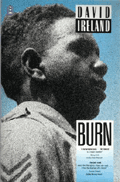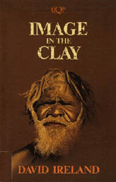David Ireland – May 5 2019
Oaktree’s Live Below the Line – May 6-10 2019
Live on $2 a day for 5 days to fundraise to abolish poverty.
 David is an award-winning writer who first came to notice in 1958 when Image in the Clay shared third prize in a competition. After pursuing a variety of occupations, including greenskeeper, factory hand, and oil refinery worker – which latter job provided the inspiration for his second and best-known novel, The Unknown Industrial Prisoner – David became a full-time writer firstly of poetry and drama before turning to fiction. David has written one other play, The Virgin of Treadmill Street, but he is best known for his novels for which he became one of only four Australian writers to win the Miles Franklin Award more than twice: The Unknown Industrial Prisoner in 1971, The Glass Canoe in 1976, and A Woman of the Future 1979. David was made a Member of the Order of Australia in 1981 and in 1985 he was awarded the Australian Literature Society Gold Medal.
David is an award-winning writer who first came to notice in 1958 when Image in the Clay shared third prize in a competition. After pursuing a variety of occupations, including greenskeeper, factory hand, and oil refinery worker – which latter job provided the inspiration for his second and best-known novel, The Unknown Industrial Prisoner – David became a full-time writer firstly of poetry and drama before turning to fiction. David has written one other play, The Virgin of Treadmill Street, but he is best known for his novels for which he became one of only four Australian writers to win the Miles Franklin Award more than twice: The Unknown Industrial Prisoner in 1971, The Glass Canoe in 1976, and A Woman of the Future 1979. David was made a Member of the Order of Australia in 1981 and in 1985 he was awarded the Australian Literature Society Gold Medal.
 Burn
Burn
Angus and Robertson, 1974; ISBN 9780207131455
A novel of extraordinary power and irony about a part-Aboriginal, fringe-dwelling family centred round the day they are evicted by the town council from their Murray River shack. Gunner McAllister lies by the river and daydreams of war. Not, ironically, of his glorious tribal warrior-past, or of war with the white Australians, but of his fighting in the “white man’s war” long ago.
“Ireland has done something very challenging …. Although his protagonist has still to determine his true function, and although he is fighting in reaction to his own insignificance, we begin to sense where reconciliation is possible…” – Adrian Mitchell, Meanjin
 Image in the Clay
Image in the Clay
University of Queensland Press, 2nd edition, 1986;
Full length; 2 female, 10 male
Image in the Clay highlights the social and cultural distances between Aboriginal and white society in Australia. It centres on the home-coming of Gordon, a black man who has left his small country town and his family to work in the city. Gordon’s family members have pinned their anxious hopes on him, though they themselves are destined for a life of poverty and instability as outcasts in their own country. Image in the Clay was first published in 1964, with a Preface by Norman McVicker (UQP) and in ‘Plays of the 50s: Volume 2’ edited by Katharine Brisbane (Currency Press).
